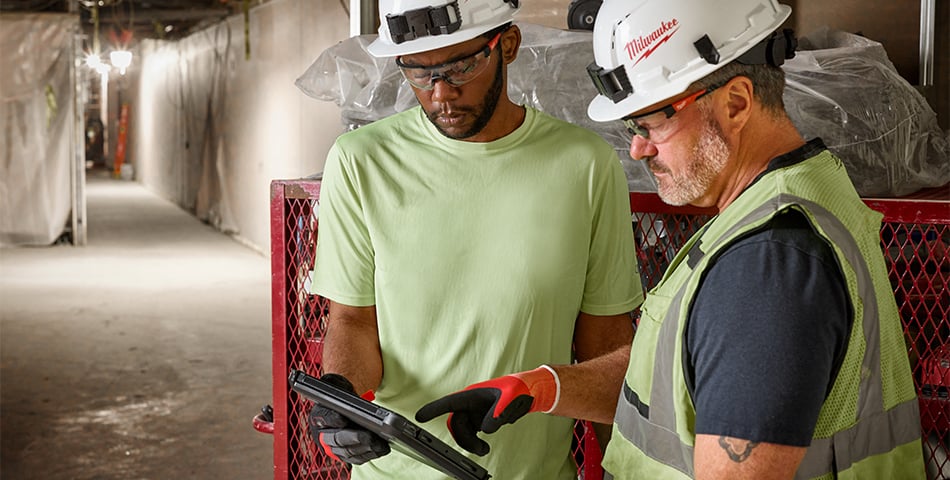
Anyone who’s worked in construction long enough knows that the only constant in this business is change. Those blueprints? That line item? Your precisely calculated estimates on how much time, money, and energy a job will cost you? All of it can go out the window at a moment’s notice.
The phrase “change order” can evoke a wide range of emotional responses. If you’re a contractor, reading those two words just now may have sent a trickle of dread down your spine. If you’re a project owner or client, a change order may be a welcome sight, a magical key phrase that unlocks the most desired outcomes for your building project. Then again, it’s just as likely that the responses are reversed.
However you feel about them, change orders are a simple fact of life in the world of construction. In fact, 35% of all construction projects will experience at least one major change order before completion. Rather than fearing and trying to avoid them, contractors would be wise to learn about how change orders work so as to be better prepared the next time one inevitably swims into view.
Jump Ahead:
- What Is a Construction Change Order?
- Types of Construction Change Orders
- Change Order Examples: Common Reasons for Change Orders
- Change Orders and the Law: What Happens if There Is a Dispute?
- Construction Change Directives
- Cardinal Change Doctrine
- Construction Change Order Process: What to Include in a Change Order?
- How Do You Write a Construction Change Order? What to Include in a Change Order?
- How to Respond to Change Orders
- What Is an Acceptable Change Order Percentage?
- Tips for Managing Change Orders
What is a change order? Change Order Meaning
A change order is a document that re-defines the scope, budget, and timeline of a previously agreed upon construction job.
In a typical construction contract, two parties–the contractor and client–agree in writing to a set of parameters that define what a project is, how much it will cost, and how long it will take to complete.

But plans can change for any number of reasons, and when they do, it’s time to issue a change order. Commonly provided for within a specific clause of most construction contracts, a change order supplies a clean, efficient, and legally secure procedure for both parties to identify and implement changes to a project.
It’s highly preferable for legal reasons that the agreement surrounding a change order be cemented in writing, though this doesn’t always occur in practice.
This next part is important: A change order is only valid if both parties agree to it.
We’ll dive deeper into the legal waters in a moment. For now, let’s take a closer look at why a change order might be issued in the first place.
Types of Construction Change Orders
Build.com lists four primary types of construction change orders that may arise:
- Lump Sum Change Order, which they describe as “when the change in the scope of work can be quantified with a firm price, resulting in an overall increase in the expense of the project.”
- Zero Cost Change Order, by contrast, doesn’t affect the contracted price, and is typically used to ensure scope changes are documented (despite those changes not affecting the contract value).
- Time & Material Change Order (aka T&M), a change order where the proposed cost cannot be estimated, where contractors are expected to “track their time spent working on the change, as well as any costs associated with needed materials or equipment.”
- Unitary Cost, finally, represents instances where a contractor will negotiate a change upfront (e.g., before any change-related work begins). Unitary cost, they explain, is "based on additional scope of work that can be defined by specific measurement units.”
Change Order Examples: Common reasons for change orders
Construction is a dynamic and kinetic business. Having an agreed upon plan is essential, but it’s equally important for everyone involved to remain flexible in the face of ever shifting circumstances.

There are many reasons why a change order might need to be issued during a construction project’s lifecycle. Here are just a few:
- Increase in prices: A lot of time can pass between when a project bid is accepted and when work crews break ground. Within that window, the quoted cost of materials and equipment can fluctuate wildly, as the ongoing COVID-19 pandemic continues to teach us. Though situation dependent, it is possible for contractors to request change orders that address increased market prices via a contractual mechanism called a material price escalation clause.
- Unknown unknowns: Even the best laid plans of mice and men can go astray. Maybe the terrain has changed since the original site survey. Maybe a new building regulation just hit the books. Maybe new data has come to light about toxins in the local environment or the viability of a particular construction material. There are many unforeseeable factors that can cause a change in the timeline, budget, or scope of a project.
- Human error: People make mistakes. A stray decimal point here or a misdrawn schematic there is all it takes to delay and derail a construction project, requiring a timely issuance of a change order to correct course.
- Design changes: People also change their minds. Clients can add and subtract features to their project even when construction is well underway. Whether it’s the sudden addition of skylights or a full-blown gear shift toward achieving LEED certification, contractors should be prepared to accommodate adjustments–within reason, of course.
- Acts of God: There’s no greater disruptor than Mother Nature. In the face of increased natural disasters and extreme weather events in the age of climate change, construction timelines and budgets are like leaves on the wind.
Change orders and the law: What happens if there is a dispute?
While it’s true that a change order is only official when both parties agree to it, it’s also true that the story doesn’t end there.

Ideally both parties are able to sort out their differences and reach some sort of agreement in the event of a dispute over a change order. If, however, the impasse proves irreconcilable, both the client and the contractor have alternate paths they can pursue should they choose to press the matter.
Construction Change Directives vs Change Order
Let’s start with the client’s side.
Suppose a client has requested a major design change: Instead of lumber frame construction, they now want their building to be built entirely of stone masonry.
The client submits a change order, but the contractor rejects it. If the client is determined to get their way, they can unilaterally compel the contractor to accept the change order with what’s called a “construction change directive,” or CCD.
According to the American Bar Association, a construction change directive is a legally binding mechanism that empowers clients to command contractors to complete a change order even without the contractor’s consent.
In other words, our contractor now has to build the building out of stone, even if they don’t want to.
That being said, the issuance of a CCD also isn’t the end of the story.
Cardinal Change Doctrine
Now let’s take a look at the flip side.
From the contractor’s perspective, the change order and subsequent CCD requesting a shift to stone masonry was drastic in a number of ways. For starters, it didn’t alter the project’s deadline or budget, even though stone is significantly more expensive than wood and may take weeks to arrive. Another problem is that the contractor doesn’t specialize in stone masonry, and would therefore have to outsource an overwhelming majority of the work to a sub-contractor who does. What’s more, this is only the latest in a string of major last-minute change orders from the client.
If a contractor feels that a change order or a series of change orders falls outside the general scope of the original contract, they may invoke the “cardinal-change doctrine.”
In short, the cardinal-change doctrine is a procedure by which a contractor can seek to terminate a construction contract.
Here’s how the American Bar Association describes it:
“Simply put, the cardinal change doctrine holds that some changes in the work so fundamentally alter the original obligation undertaken by the contractor that it would be a breach of contract by the owner if the owner insisted the contractor perform the work.”
Generally speaking, many construction contracts allow for a broad range of changes to the specific scope of a project. However, if there have been numerous drastic changes that fall outside the “general scope” of a project, it may be time to talk to a lawyer about putting the cardinal-change doctrine into play.
Even this, however, doesn’t signal a clear-cut resolution to a change order dispute, as it’s up to the courts to evaluate each invocation of the cardinal-change doctrine on a case-by-case basis.
Construction Change Order Process: What to Include in a Change Order?

As Build.com notes, the construction change order process typically follows six steps:
- The contract is signed.
- An issue is raised (such as material procurement issues, regulatory changes, owner-initiated changes, design errors, poor site conditions, etc.)
- A change is proposed.
- The process is received and reviewed, typically known as a request for information (RFI)
- The change is agreed upon.
- The original contract is amended.
How Do You Write a Construction Change Order? What to Include in a Change Order?
While disputes can and will occur, the whole point of a change order is to create a smooth and efficient process for altering a project that benefits all parties involved.

With this in mind, let’s take a quick look at how to properly create a change order.
(Pro-tip: Always put your change orders in writing. While many verbal contracts are in fact legally binding, it’s best practice to have written records that you can fall back on as hard evidence in the event of a dispute.)
If you’re writing your own change order from scratch, make sure it includes the following:
- The name and location of the project.
- The names and contact information of the contractor and the client.
- A clear, precise, and complete description of what changes to that original project are being requested, and why.
- A thorough and itemized account of how the proposed changes will affect the project’s
timeline, budget, and schedule.
- The signatures of each relevant party.
- The date the change order is adopted.
If you want to be absolutely sure you’re change order is filled out correctly, consider using a template, like this one from the American Institute of Architecture.
How to respond to change orders
Knowing how to handle a change order is essential. Here are a few tips for how to respond when the next change order arrives:
- Review the Contract: When you receive a change order, the first thing you should always do is make sure you have a clear understanding of the original contract. What are the exact changes to the original work requirements? How does the change order affect the project’s budget and timeline? Will this particular change order cause problems downstream that require deeper consideration before taking action? All of these are essential questions that can be answered by simply reviewing the existing contract.
- Plan for Change Orders: Ideally, change orders should never catch you flatfooted. Having a step-by-step plan for responding to change orders is a great way to remove a lot of the fear and anxiety surrounding them. Instead of reacting in the heat of the moment, set aside some time to map the change order process from beginning to end, identifying important junctures and key resources like change order templates along the way. Each individual situation is different, but having a solid plan in advance can help see you through even the rockiest of circumstances.
- Communicate: There is nothing more important than clear, cordial, and open communication. This is true in any relationship, be it personal or business. In construction, failure to communicate will put you in the fast lane to making the change order process more confused and agonizing for everyone involved. To ensure that a change order is understood and properly executed from beginning to end, it’s critical that everyone—from the client and contractor on down to all the related work teams—are on the same page every step of the way.
- Document Everything: If you want to know where you’re going, you need to know where you’ve been. While also important for legal reasons, keeping meticulous written records is the best way to capture how the contract has evolved, what information has been shared with which parties, and what work has been completed up to that point.
- Take Swift Action: Once a change order has been received, reviewed, and agreed to, it’s always a good idea to act on it as soon as possible. The last thing you want is a change order amending a previous change order because the window of opportunity has closed. Plus, timely action is a signal of good will that can keep relations on an even keel.
What Is an Acceptable Change Order Percentage?
One way is to calculate costs is to remember the following equation:
Overhead % ÷ Direct Cost % = Markup %
Smartsheet, a project and work management platform, offers some guidelines for:
Tips for Managing Change Orders
As we said up top, change orders are inevitable.
And to be clear: We don’t want to make a change order to sound bad. At the end of the day, many contractors rely on change orders to improve their margins.

That said, there are things that contractors can do to manage certain change orders and ensure everyone involved is whole.
- Expect the Unexpected: You may not be able to control tectonic market shifts, but there’s no rules against doing your best to anticipate and prepare for them. A savvy construction project manager is able to conduct construction forecasting in their sleep, deftly sidestepping change orders related to fluctuating materials and commodity prices.
- Conduct a Thorough Survey: Planning a building project starts with the land. The odds of a change order in your future increase exponentially when you don’t have a deep understanding of the environment a structure will be situated within. To achieve that kind of deep understanding from the get-go, it’s essential to utilize a highly-skilled surveyor, preferably one who’s well versed in cutting-edge technologies like LiDAR and Building Information Modeling (BIM).
- Visualize and communicate: Speaking of, there’s no better way to visualize and communicate about a building project than BIM. A type of software that allows users to create and interact with highly-immersive 3D simulations of built structures, BIM is an excellent tool for making sure all the various stakeholders and departments are always on the same page as a project unfolds—potentially preventing the need for unforeseen change orders.
- Keep Track of Your Assets: The loss of materials, tools, and equipment due to theft or inventory management is a problem that costs the construction industry millions of dollars every year and leads to severe delays in project timelines. An easy way to prevent change orders related to unforeseen asset displacement is to use Milwaukee Tool's free ONE-KEY™ inventory management app. With One-Key, you can log and track the physical locations of every tool in your inventory. Even non-One-Key compatible tools and items can be monitored and inventoried by affixing them with one of our Bluetooth Tracking Tag.
- Construction Job Costing: Furthermore, for those losing sight into what goes into their overhead costs related to tool and equipment inventory, experiencing tighter and tighter profit margins, and are spending hours and hours of manual labor calculating costs for individual projects, Construction Job Costing allows you to assign rental rates for equipment in your inventory and remain in the know about costs that are accrued and billed to projects. One-Key's New Job Costing feature helps you gain visibility into variable costs of your projects and preserve your profit margins.
- Increase Safety: As one of the most dangerous occupations, it’s essential that we throw every resource we have toward the protection of construction workers’ safety, health, and well-being. One of the many reasons why is that worker injuries can cause massive delays in building projects. If you want to avoid timeline related change orders, follow the seven key performance indicators of safety and hire a safety manager to create clear safety protocols and establish a culture of safety within the workplace.
- Hone Your Process: Change orders caused by mistakes can be ironed out by reducing waste and opportunities for error within your workflow by adopting lean construction techniques.
Bottom Line
Change orders are a part of life in construction. There are sensible things you can do to prevent them, but it’s impossible to avoid them entirely. Contractors can prepare for change orders by getting familiar with the different clauses built-in to construction contracts and knowing what legal options are available in the event of a dispute. If the need for a change order arises, the best thing for all parties is to make sure everything is put down in clear and precise writing.
At the end of the day, change orders are just another tool, and like any tool, the trick to demystifying change orders is to learn when and how to use them.